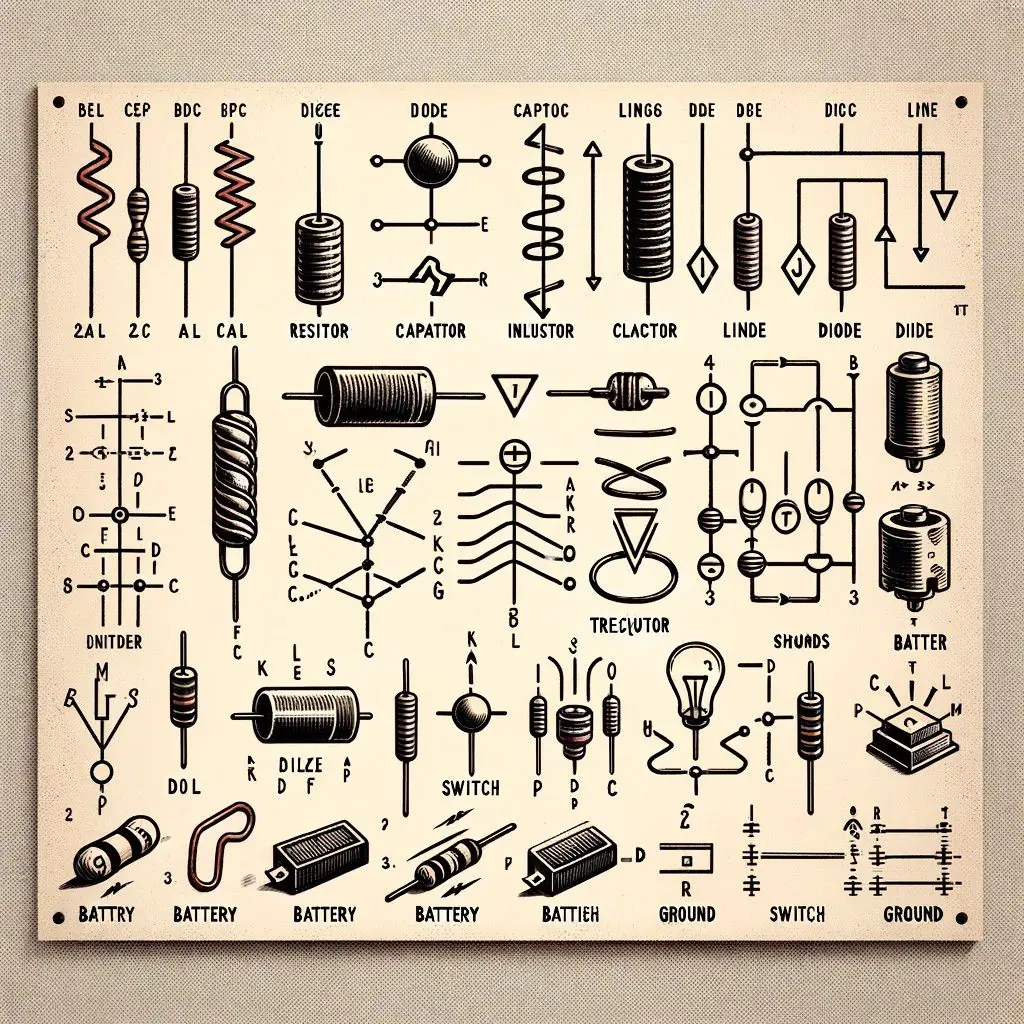
Electric Current and Circuits Explained: Essential Guide for NCERT Class 10 Students

Electric Current and Circuits: Understanding the Basics for Class 10 Students
Introduction
In the fascinating world of physics, electricity plays a pivotal role. This article, tailored for Class 10 students following the NCERT curriculum, delves into the fundamental concepts of electric current and circuits, electric potential and potential difference, and more. It’s designed to provide a comprehensive understanding in a simple and engaging manner.
Electric Current and Circuits
What is Electric Current?
Electric current is the flow of electric charge through a conductor, like a wire, usually driven by a voltage source such as a battery. It’s measured in amperes (A).
Types of Electric Current
- Direct Current (DC): Flows in one direction.
- Alternating Current (AC): Changes direction periodically.
Conductors and Insulators
- Conductors: Materials that allow easy flow of electric current (e.g., copper).
- Insulators: Materials that do not allow current to flow easily (e.g., rubber).
Circuit Diagrams
Circuit diagrams use symbols to represent different components of a circuit, making it easier to understand how a circuit is constructed.

Electric Potential and Potential Difference
Electric Potential
It’s the electrical potential energy per unit charge at a point in a field. Measured in volts (V).
Potential Difference
It’s the difference in electric potential between two points. It causes current to flow in a circuit.
Ohm’s Law
Ohm’s Law states that the current flowing through a conductor between two points is directly proportional to the voltage across the two points. Mathematically, ( V = IR ), where V is the voltage, I is the current, and R is the resistance.
Factors Affecting Resistance of a Conductor
- Material: Different materials have different resistivities.
- Length: Longer conductors have greater resistance.
- Cross-Sectional Area: Thinner wires have higher resistance.
- Temperature: Higher temperatures generally increase resistance.
Resistance of a System of Resistors
Resistors can be connected in series or parallel:
- Series: Total resistance is the sum of individual resistances.
- Parallel: The inverse of the total resistance is the sum of the inverses of individual resistances.
Heating Effect of Electric Current
When current flows through a conductor, it generates heat due to the resistance. This is the principle behind devices like electric heaters and light bulbs.
Electric Power
Electric power is the rate at which electrical energy is transferred by an electric circuit. It’s measured in watts (W) and calculated by the formula ( P = VI ) or ( P = I^2R ) or ( P = \frac{V^2}{R} ).
Conclusion
Understanding these fundamental concepts of electricity is crucial for Class 10 students. This knowledge not only forms the basis for further studies in physics and engineering but also helps in everyday life, as electricity is an integral part of modern society.
Questions and Answers on Electric Current and Circuits
- Q: What is electric current?
A: Electric current is the flow of electric charge through a conductor, typically measured in amperes (A). - Q: Differentiate between AC and DC.
A: AC (Alternating Current) changes its direction periodically, while DC (Direct Current) flows in one direction only. - Q: Name two good conductors of electricity.
A: Copper and aluminum are good conductors of electricity. - Q: What is a circuit diagram?
A: A circuit diagram is a graphical representation of an electrical circuit using standardized symbols. - Q: Define electric potential.
A: Electric potential is the amount of electric potential energy per unit charge at a point in an electric field, measured in volts (V). - Q: What does potential difference mean?
A: Potential difference is the difference in electric potential between two points in a circuit, driving the flow of current. - Q: State Ohm’s Law.
A: Ohm’s Law states that the current through a conductor between two points is directly proportional to the voltage across the two points and inversely proportional to the resistance between them. - Q: How does the length of a conductor affect its resistance?
A: The longer the conductor, the greater its resistance. - Q: What happens to the resistance of a conductor when its temperature increases?
A: Generally, the resistance of a conductor increases with an increase in temperature. - Q: Describe the two ways in which resistors can be connected in a circuit.
A: Resistors can be connected in series (end-to-end) or in parallel (side-by-side). - Q: What is the heating effect of electric current?
A: The heating effect of electric current refers to the phenomenon where electrical energy is converted into heat energy when current flows through a resistor. - Q: How is electric power calculated?
A: Electric power (P) can be calculated using the formula ( P = VI ), ( P = I^2R ), or ( P = \frac{V^2}{R} ), where V is voltage, I is current, and R is resistance. - Q: What unit is electric power measured in?
A: Electric power is measured in watts (W). - Q: How does the cross-sectional area of a conductor affect its resistance?
A: A conductor with a larger cross-sectional area has lower resistance. - Q: Why do bulbs get hot when left on for a long time?
A: Bulbs get hot due to the heating effect of electric current passing through the filament, which converts electrical energy into heat.